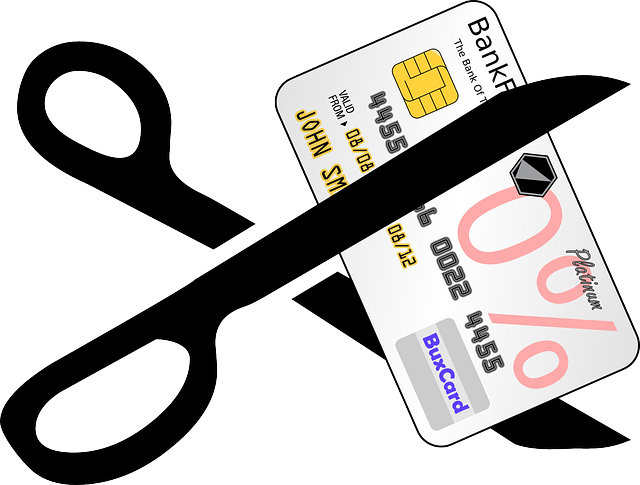 Marijana Gligoric
Marijana GligoricControlling the Chaos: Proven Strategies to Reduce Technical Debt

Taking shortcuts to meet unrealistic deadlines is standard practice in software development. These shortcuts, however, often come back to haunt businesses that don't use them systematically.
A study found that companies spend about one-third of their IT budget dealing with the consequences of these shortcuts, also known as technical debt, with the number rising to 41% for enterprises.
In this guide, we explore tested strategies for technical debt reduction that can help your development team maintain the quality of their code without sacrificing speed.
We'll take a look at practical approaches that enable teams to manage technical debt strategically rather than letting it accumulate by default. By the end, you'll learn what it means to balance speedy development and sustainable code quality.
What is Technical Debt?
Technical debt is the additional work developers need to put into a project because of the shortcuts they used while working on it in the past.
It's an intentional analogy for financial debt – there's a tradeoff between short-term benefits (speed of delivery) and long-term obligations (fixing and refactoring code).
And just like financial debt carries interest, so does technical debt. If left unchecked, interest accumulates, and future efforts to solve these past issues become much higher than if they had been addressed early on.
Types of Technical Debt
Technical debt occurs because of 3 reasons:
-
Quickly launching products is paramount these days, and incurring tech debt is a valid choice for businesses prioritizing speed over quality. This is known as intentional technical debt.
-
Unintentional technical debt accumulates when developers aren't skilled enough or provide sloppy work due to unexpected complexity.
-
Environmental technical debt occurs regardless of business and development practices because of changes in the underlying technology and environment.
By understanding these categories, teams can better identify technical debt and develop strategies to address it effectively
Measuring Technical Debt

Unfortunately, there is no single metric you can use to measure tech debt. Businesses must make do with proxy metrics and exercise common sense.
Here are a few rules of thumb that can guide you:
-
If the number of new bugs is growing compared to the number of ones being closed, tech debt is a likely culprit.
-
If the development cycle time (the time it takes the devs to make changes to existing code) is long or increasing, you may have issues with tech debt.
-
Increases in failed CD (code deployments) and CI (code integrations) are also a sign of mounting technical debt.
Although none of these metrics are definitive, they are valuable because they can be used to set up guardrails so that tech debt doesn't spiral out of control.
Tools for Tracking Technical Debt
There are many tools to choose from for tracking technical debt. Project management tools like Jira and Azure DevOps let you create a technical debt backlog and tag issues. Static code analysis tools like SonarQube and CodeClimate will find code smells, complexity issues, and potential vulnerabilities.
You can configure your Git repository to track debt metrics with custom labels and milestones. For visualization, tools like Code Health Reports and Technical Debt Dashboards will give you real-time insights into debt accumulation and reduction across the codebase.
Prioritizing Technical Debt

Not all technical debt is created equal. Businesses need to develop a strategy for addressing it without compromising too much on current tasks like launching new features. That means a system for prioritizing technical debt is needed.
Here are a few popular strategies for prioritizing tech debt your business can use:
-
Quadrant Method – Categorize debt based on how much it costs to fix it and what the impact of fixing it would be. Then, target high-impact and low-cost debt first for quick impact.
-
Highest Interest Debt First – Debt that can accrue long-term maintenance, like security vulnerabilities, is addressed first.
-
Impeding Debt First – Addressing technical debt that obstructs new feature development or necessary updates. This ensures progress and operational fluidity.
Agile Development Approach
The Agile methodology of software development is the perfect framework for managing technical debt. Breaking work into short sprints gives teams natural checkpoints to review and address debt before it gets out of control.
Unlike waterfall methods where technical debt can go months without being addressed, Agile’s iterations allow teams to spot and fix issues while they're still manageable.
The methodology encourages sustainable development practices so teams can maintain code quality as they go. Sprint retrospectives allow teams to discuss where debt is building up and plan to reduce it.
The Agile methodology aligns with the best practices in software product development. It allows teams to balance new feature development with maintenance work so the software development process can hum along at a sustainable pace.
Understanding the Root Cause

Technical debt manifests itself in the codebase as disorder, opaqueness, and a lack of documentation. The root causes, however, have little to do with coding. They're complex and usually related to how the business is run on the whole.
For example, when sales teams overpromise on features or delivery timelines to close a deal, developers are often left scrambling to meet deadlines. This leads to the shortcuts that leave behind the trail of unresolved issues that eventually snowball into technical debt.
In order to tackle these issues, businesses need to make structural changes by having clear standards, regular reviews, and balanced maintenance time. Developers' input is crucial. After all, they're the ones in the trenches experiencing technical debt first-hand, so they're the best equipped to spot bottlenecks in the process.
Technical debt can also lead to unforeseen expenses, contributing to hidden software development costs that can make a mess out of project budgets.
Having quality as part of the priorities alongside speed and including the developers' feedback into the equation is the best long-term solution for taming tech debt.
Embracing Automated Testing
Automated tests are autonomous pieces of code that verify whether the software is functioning as it should.
Most developers would agree that automated tests are the best way to catch bugs. In fact, a lack of tests in itself constitutes technical debt, as failing to implement them today means more time spent updating the code tomorrow because each change becomes riskier.
Other than that, test-driven development can make refactoring safer because well-maintained tests act as documentation, making code easier to understand. They should be implemented from the get-go as the cost of adding them increases as the codebase grows and evolves in complexity.
Refactoring
The codebase can't be perfectly planned out from the start. A quick fix here, a new feature there, and the base becomes unrecognizable. After a while, the developers need to reorganize the code. This process of reorganizing existing code without changing its output is called refactoring.
To use the financial analogy again, refactoring is akin to paying off debt on time and not waiting for the interest to compound. It is the process of paying off existing technical debt by simplifying complex logic, breaking down large functions into smaller ones, improving documentation, updating outdated dependencies, and removing duplicate code.
Putting this off comes with the following risks:
-
Bugs become more frequent
-
Code becomes hard to interpret
-
Changes become riskier
-
New features become tough to implement
Adopting Code Review Practices
A code review is a process where one or more developers examine code before it's deployed to the main codebase. It presents a valuable tool against technical debt as it preempts it by tackling issues like:
-
Bugs and logic fallacies
-
Architectural & design issues
-
Style & documentation
-
Security vulnerabilities
-
Performance issues
There are many benefits to running regular code reviews. Not only are bugs and fallacies caught early on when they're easier to fix, but code reviews allow for maintaining a consistent coding standard that plays a key role in preventing unintentional technical debt from accruing.
Pair Programming

Pair programming refers to two developers working simultaneously on a single workstation. One person writes the code while the other person reviews it, providing support and guidance.
The benefits of this approach are:
-
Higher quality code because of immediate feedback
-
Better design as the cooperation prevents over-engineering
-
Shared knowledge
-
Easier problem-solving if the person coding gets stuck
Many CTOs and PMs would wince at the thought of two developers doing one person's job. However, studies show that pair programming increases development time only by about 15% but lowers the number of bugs by around 15%, as well.
The 15% drop in bugs doesn't sound too impressive, but even with a conservative estimate, it could take QA teams 10-15 times longer to fix the bad code than it would have taken the development team to preempt it with pair programming.
Conclusion

Just like financial debt, technical debt isn't necessarily a bad thing. It can be a handy tool for businesses, allowing them to meet urgent deadlines and take advantage of market opportunities.
The caveat is that technical debt needs to be a strategic decision and not just something that happens by default over time.
Development teams need to openly discuss technical debt and the tradeoffs it entails. They also need to communicate with management so that the people running the business side of things understand the long-term implications of short-term decisions.
Sharing knowledge like this across the board makes it more likely that debt will be incurred strategically instead of by default.
When development teams approach tech debt proactively, they maintain code quality and prevent the compound effect of accumulated shortcuts. Doing so keeps the codebase clean but also speeds up development in the long run. Teams that effectively manage technical debt spend less time poring over legacy code and more time building new features.
Next Steps
Feel like your business is struggling with tech debt? At brigit.dev, our engineers are battle-tested experts at preventing technical debt across complex codebases.
We've helped many companies transform their development practices from reactive to proactive and can help you catch technical debt before it spirals out of control. Contact us today to learn how we can help your business build maintainable, scalable code that doesn't accrue interest.